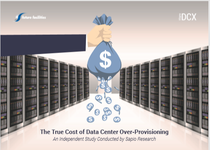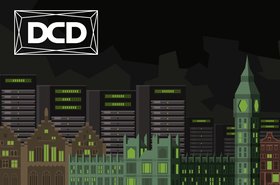5G is readily available in the UK, as EE (May 2019), Vodafone (July 2019) and Three (February 2020) have all launched their 5G networks.
Talk has already centred around new, faster download speeds, however, this is only half the story. 5G is going to bring far more change than just that. In fact, the beauty of 5G is that it opens new opportunities for mobile operators. One of the most exciting of these comes via the introduction of low latency, which creates the potential to offer Infrastructure as a service (IaaS) directly from a network. Nonetheless, before IaaS and the other benefits of 5G are realized a number of challenges need to be overcome in how network architecture is designed.
Avoid being a dumb pipe
We all know that no operator wants to become a dumb pipe. Whenever a new technology like 5G arrives, mobile operators immediately look for ways to use it to offer new services and ultimately drive revenue growth. Previous strategies following the launch of 4G included buying media companies and sporting rights to help provide content services and deepen the connection with customers – although the success of these developments is questionable at best. For instance, initiatives such as BT buying Premier League and Champions League rights as part of it launching its own sports channels has had mixed results, while Verizon's acquisition of Yahoo and AOL has so far failed to live up to the initial expectations. As competition between media companies ramps up, the process of buying media companies has become too expensive for many operators to keep up. It’s time to think again.
So what’s next if becoming content providers have had mixed results to say the least? And what could 5G enable? Well, one sometimes-overlooked aspect of 5G technologies is the introduction of Ultra-Reliable Low-Latency Communication (URLLC). With latencies as low as one millisecond, it opens up a world of possibilities. This ranges from connected cars to medical operations being performed remotely. However, while these applications sound exciting, they’re unlikely to have a large impact on operators’ bottom line.
What will have that impact though is the ability to provide infrastructure as a service (IaaS). Benefiting from the fact that 5G runs on very short wavelengths, naturally requires data centers and network infrastructure to be much closer to the edge. IaaS such as high powered computing can, therefore, be offered to businesses as an alternative to making significant investments in their own computing infrastructure. Enterprises can then dial up and down the level of computing that they need; saving costs and adding extra levels of flexibility.
New opportunities
So by being closer to the edge of the network - as required by 5G - a whole new set of services can be offered to enterprise customers, without network providers needing to change or heavily invest in new data center infrastructure.
This good news is further boosted because average data centers already run with plenty of extra capacity that could be sold as computing power to enterprise customers. Based on what Future Facilities has seen, data centers have over a third more capacity than they need. Accessing this spare capacity and enabling edge data centers to run at their optimal state would unlock huge potential revenue opportunities for an operator.
However, this is often easier said than done. To enable new revenue streams by providing IaaS directly from existing edge infrastructure, operators must overcome the challenges inherent in designing edge data centers. Along with power management, one of the biggest issues is that of heat management. Carrying out high powered computing in often small and cramped locations means that vast quantities of heat will be generated. It’s no wonder really that thanks to the lower latency, an operator survey from 451 Research found that fifty-five percent see data center infrastructure management as key to unlocking the full benefits of 5G. Making data centers smaller, in often less than ideal locations and with high levels of computing, can be daunting for even the biggest and most well-resourced operator.
Data centers in the city
The good news is that tools already exist that can help with heat management. For starters, the use of physics-based digital twins has long been used in the aerospace, oil and gas and electronics industries to ensure that designs work as efficiently as possible. Creating an exact digital representation then of an edge data center can help to dramatically increase a data center’s efficiency, while also lowering the risk of downtime. Recent research commissioned by Future Facilities found that a staggering eighty-five percent of organisations have experienced outages or downtime in the last 12 months, while those that utilise a physics-based digital twin were twice as resilient.
The digital twin can also help to manage other building blocks essential for setting up smart city infrastructure, like the Smart Pole. This is typically a street light pole that combines intelligent lighting technology with communication, power and security features, such as 5G. It’s another tool that, being a sealed environment, needs a cooling system that ensures appropriate operating conditions.
The arrival of 5G is an important time for operators. Undoubtedly it is set to fundamentally change how mobile networks operate and open new doors to the services they can offer. Thanks to lower latency and a need to have infrastructure closer to the edge of a network, one of the most exciting is the possibility of providing IaaS directly to business customers. However, for this to become a reality, and for the true potential of 5G to be realised, operators will need to ensure their data centers are running at a highly efficient level. It’s time for operators to meet their digital twin.





